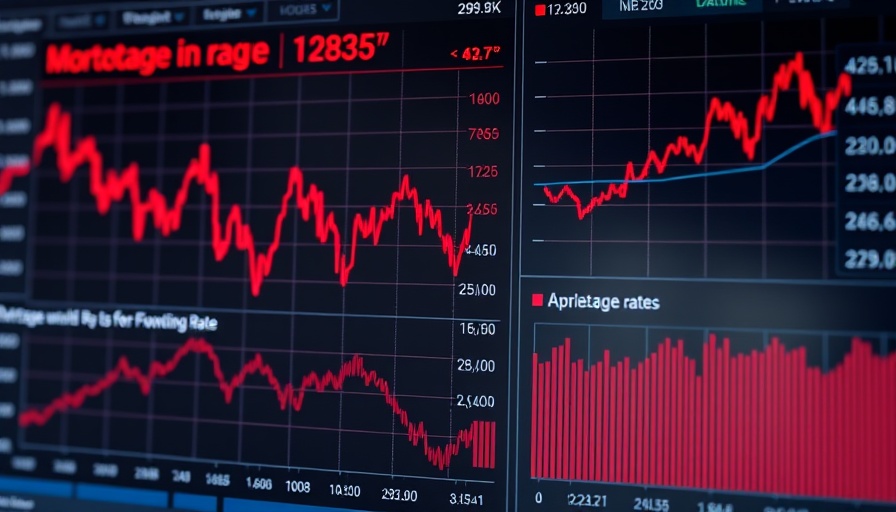
Mortgage Rates Hit a New High Amid Market Volatility
As of April 8, 2025, the mortgage market is reflecting increasing unease, with rates attaining their highest levels since February. The average 30-year fixed mortgage rate has notably surged to 7.00%, marking a significant rise that aligns with broader economic disruptions tied to new tariff plans. This recent hike signals the market's disapproval of ongoing trade tensions, displaying a palpable shift in sentiment as both stock and bond markets respond to fiscal instability.
The Drive Behind the Rate Surge
Following a tumultuous couple of days, where the market experienced its largest two-day uptick in rates this year, current levels might appear alarming to some. However, they would seem less concerning without the context of the past week’s volatility, where stock sell-offs pushed many investors towards the safety of bonds, generally pushing rates lower. But now, the correlation has reversed.
Insights into Treasury yields give further context to this phenomenon. While the 10-year Treasury yields have increased notably, the 2-year counterparts have seen a slight decrease. Such inconsistencies highlight investor hesitance as several substantial Treasury auctions loom ahead, raising concerns about whether investors will hold onto bonds priced high amidst rising rates.
Economic Implications of Tariff Changes
The implications of this rise extend beyond immediate market reactions; they encompass broader economic concerns. The tariffs could prompt a need for increased Treasury issuance to compensate for anticipated revenue shortfalls, which places additional upward pressure on interest rates. Here, the economic intricacies become particularly relevant. If trade relationships deteriorate due to tariffs, foreign demand for U.S. Treasuries may decline, further unbalancing the rates towards the higher end.
Investor Sentiments and Market Reactions
To better understand this rising trend, it's essential to consider how the market reactively reshapes based on investor sentiment. When foreign central banks, who typically invest heavily in U.S. Treasuries following favorable trade, begin to retract their investments, the ramifications become multi-dimensional. Lower foreign demands dictate an uptick in domestic rates, complicating the financial landscape further.
Future Predictions: What Lies Ahead for Rates?
The current trajectory of mortgage rates invites speculation on future movements. Economic experts anticipate that should tariffs remain a fixture in the national fiscal policy, the uncertainty surrounding trade and economic stability may lead to continued rigidity in interest rates. Moreover, as inflation concerns resurface with higher tariffs, market participants might brace for even tighter monetary conditions moving forward.
Take Control of Your Financial Future
Given the current landscape, prospective homeowners and borrowers must be proactive. Understanding the implications of these trends not only aids in navigating the mortgage landscape but also empowers individuals to make informed decisions about their financial futures.
 Add Row
Add Row  Add
Add 




 Add Row
Add Row  Add
Add 








Write A Comment